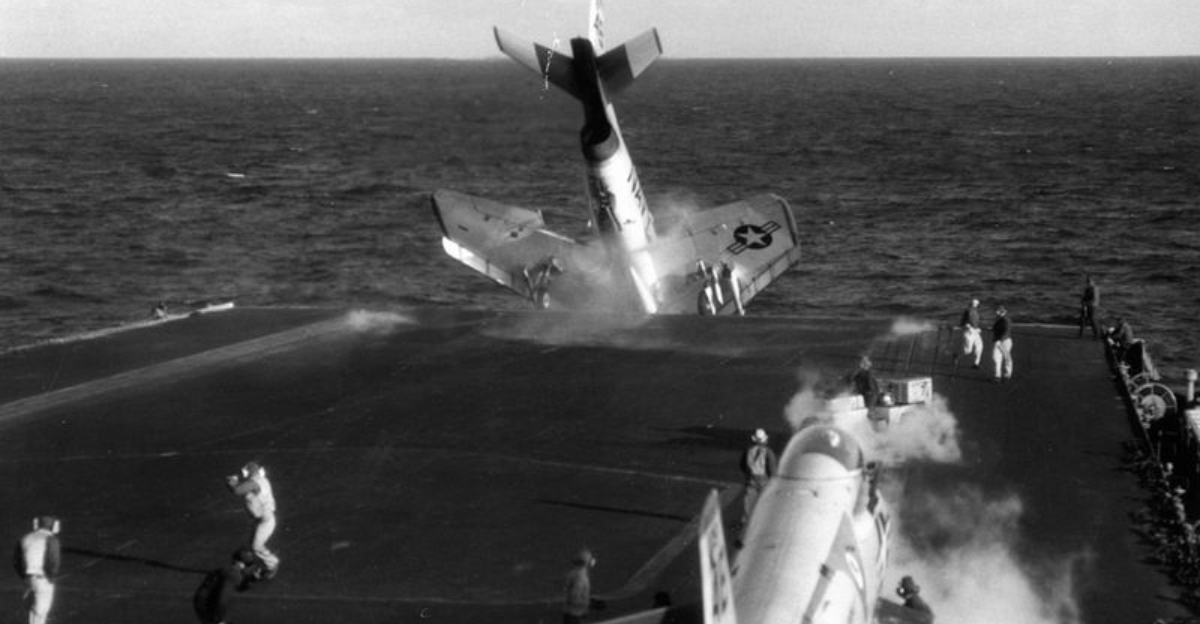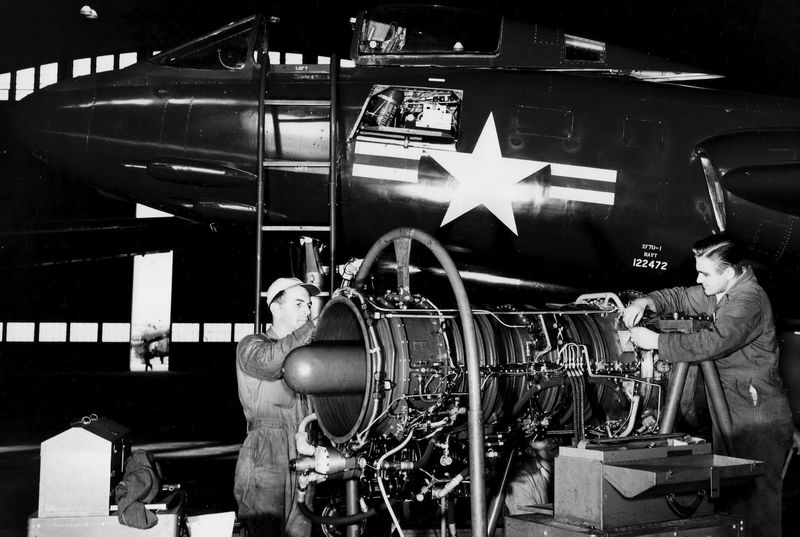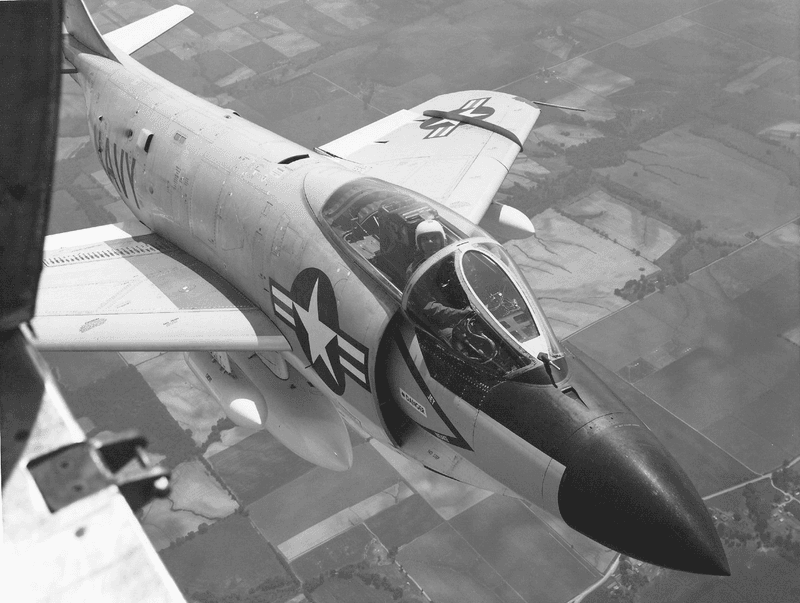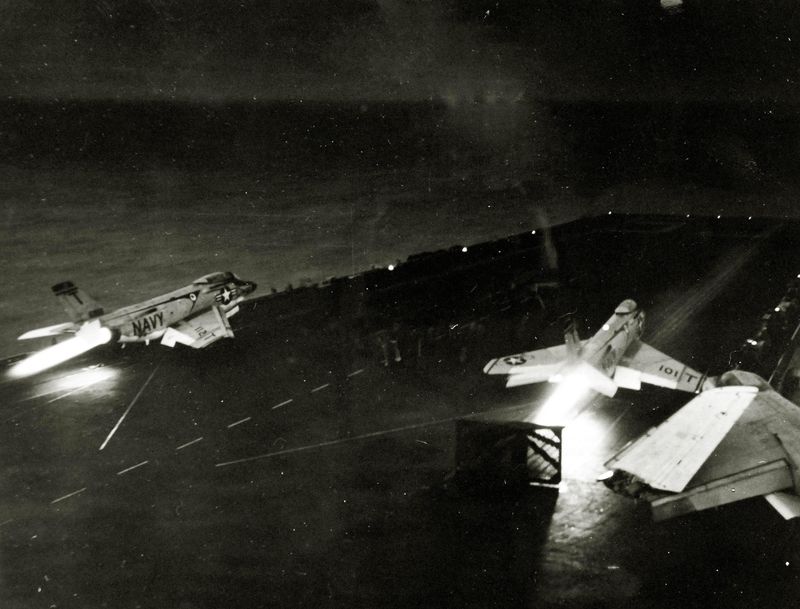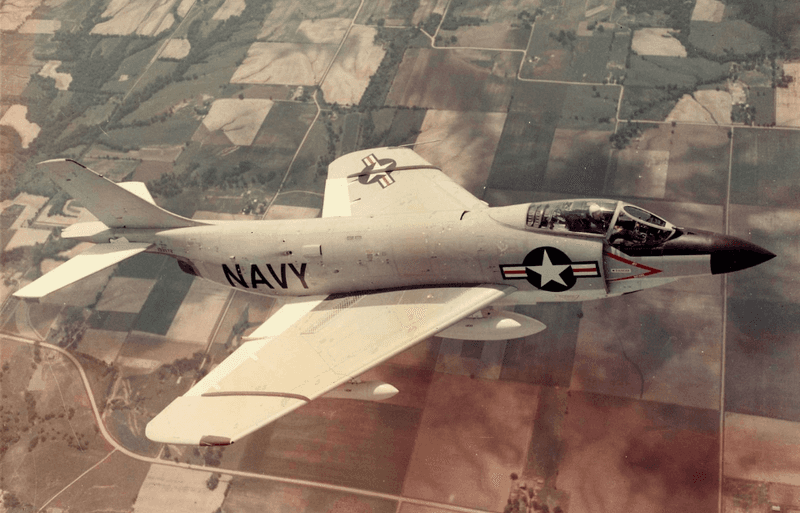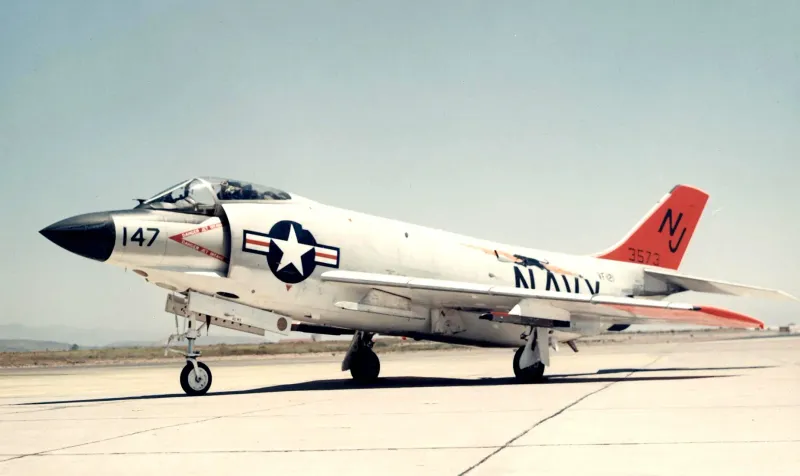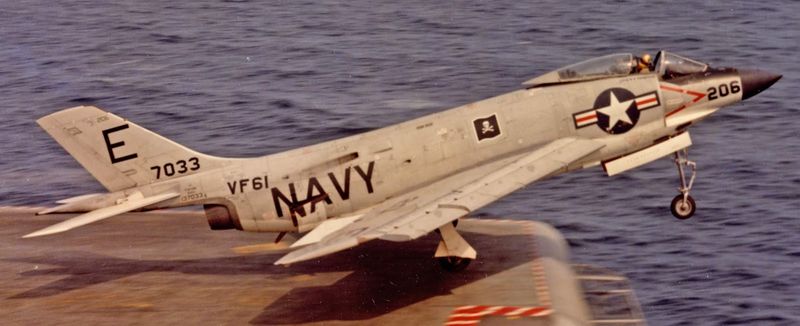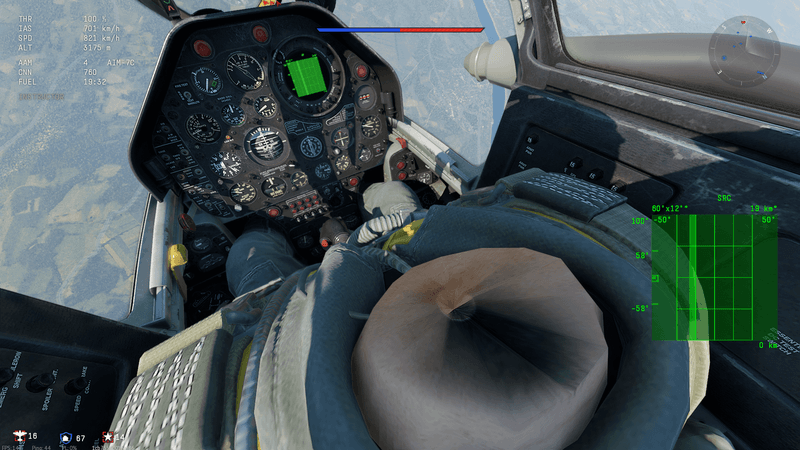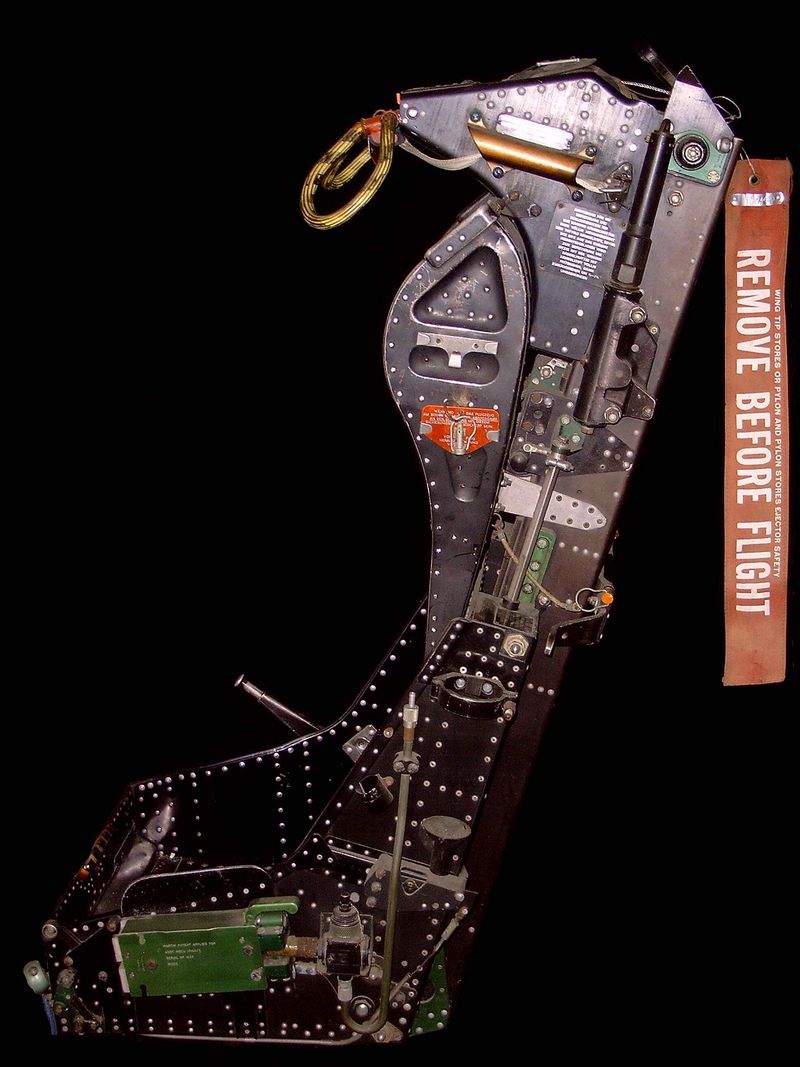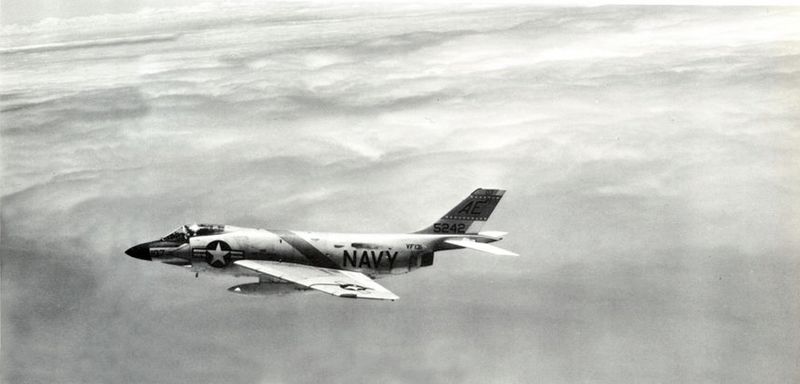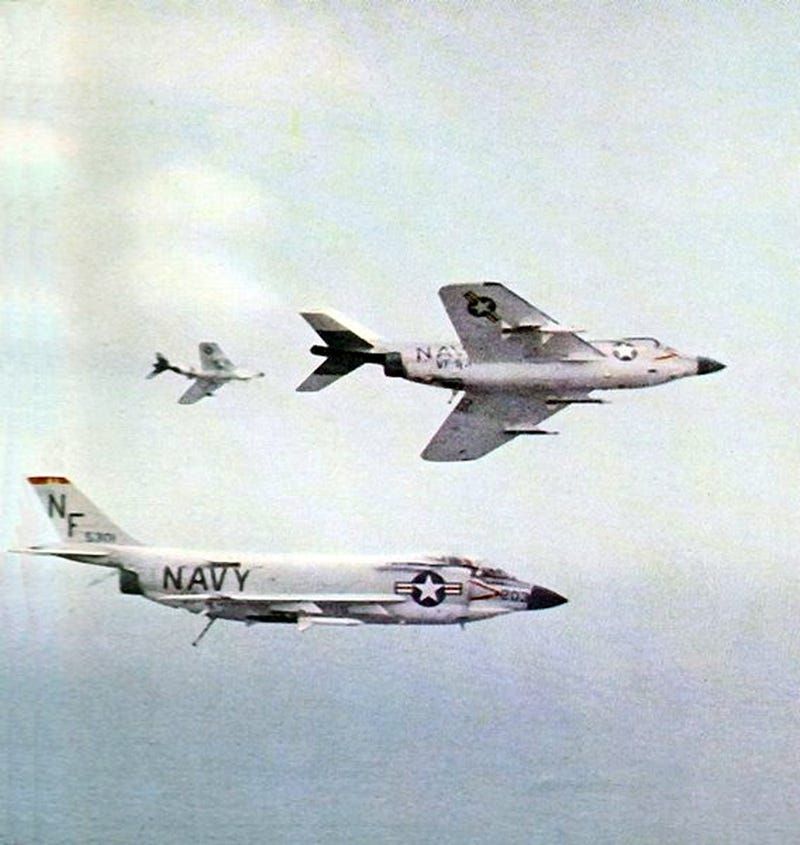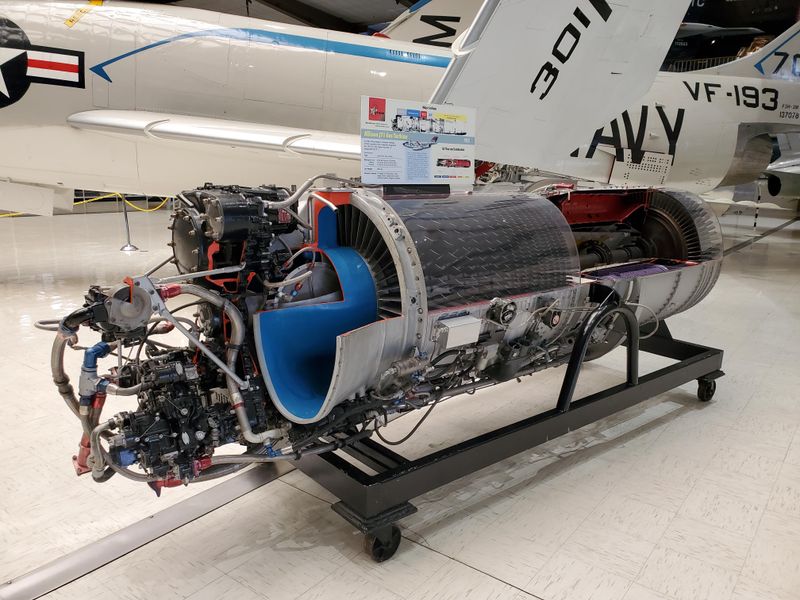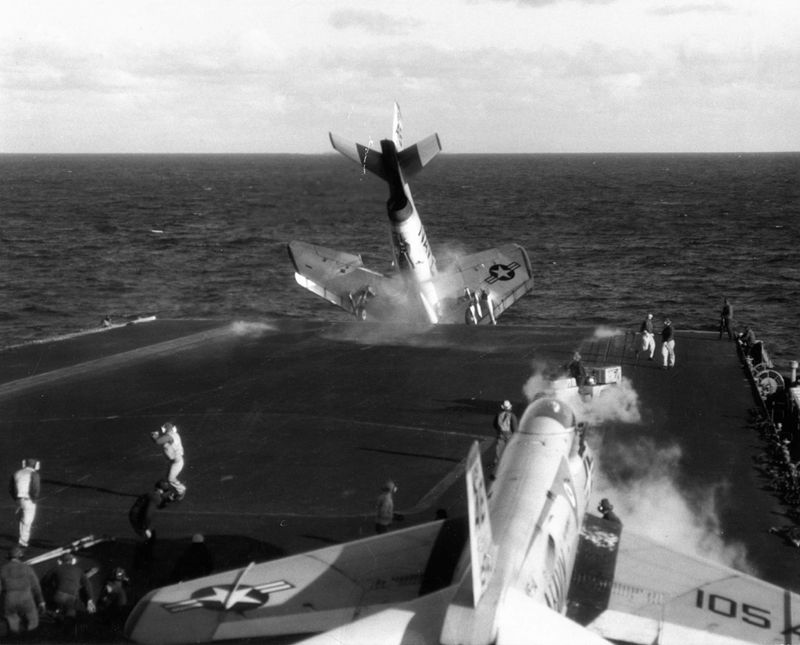The McDonnell F3H Demon was meant to be a top-tier U.S. Navy jet fighter during the Cold War—but instead, it earned a reputation as a “widowmaker.”
Underpowered, unreliable, and plagued with design flaws, the Demon proved to be more dangerous to its own pilots than to any enemy. Here are 15 real ways this infamous fighter jet turned deadly:
1. Underpowered Engines That Couldn’t Keep It Airborne
The Westinghouse J40 engine, meant to power the F3H Demon, was notoriously unreliable. Pilots often experienced engine failures during critical phases such as takeoff or mid-air flight, leading to a series of crashes and emergency landings.
Naval aviators knew they had a significant challenge on their hands every time they climbed into the cockpit. Maintaining control was a constant battle.
While the design hoped to revolutionize naval aviation, it instead became a cautionary tale. Unfortunately, the unreliability of the engine overshadowed every mission, putting lives at risk.
2. High Stall Risk at Low Speeds
Stalling at low speeds was a perilous problem for the F3H Demon. Naval aviators reported frequent stalls, especially during essential operations like carrier landings or tight maneuvers.
The unpredictability of these stalls left many pilots in dangerous situations, with little time to recover. As they approached the deck, the fear of stalling loomed large. This flaw made landing a nerve-wracking experience.
Many pilots struggled with the aircraft’s handling, and some never recovered in time, leading to tragic outcomes. The risk of stalling was ever-present.
3. Catapult Launches That Ended in Ocean Ditchings
The F3H Demon faced significant challenges during catapult launches from aircraft carriers. Pilots often found themselves in precarious situations, as several jets failed immediately after launching.
This left naval aviators with only seconds to react—choosing between ejecting into the cold sea or going down with their malfunctioning aircraft. The unpredictability of these launches had crews on edge.
The margin for error was slim. A successful launch felt like a victory in itself. Unfortunately, the reality was many flights ended in unexpected ocean ditchings, risking lives and equipment.
4. Engine Flameouts During Routine Flights
Routine flights turned into tense affairs due to frequent engine flameouts in the F3H Demon. Pilots faced the unnerving reality of engines shutting down unexpectedly at high altitudes.
These flameouts often left aviators with two choices: attempt a risky gliding landing or bail out entirely. The problem was pervasive, forcing pilots to constantly be on high alert. The sensation of suddenly losing power is one aviators dreaded.
Unfortunately, this wasn’t a rare occurrence. Many pilots had to rely on their training and quick decision-making to navigate these dangerous situations.
5. One of the Worst Power-to-Weight Ratios in Navy History
The F3H Demon was plagued by one of the worst power-to-weight ratios in naval aviation history, making it sluggish and uncompetitive. In combat, the jet’s inability to keep up with even its wingmen was a significant disadvantage.
Pilots struggled with the lack of responsiveness, especially during dogfights. The aircraft felt heavy and unyielding, often leaving aviators frustrated.
It couldn’t match the speed and agility of enemy aircraft, placing its own pilots at risk. This flaw was a critical shortcoming, affecting both performance and morale within the ranks.
6. Severe Maintenance Nightmares
Ground crews faced severe challenges in maintaining the F3H Demon, particularly due to the J40 engine’s notorious reliability issues. Constant malfunctions required frequent fixes, transforming it into one of the most grounded aircraft in the Navy’s arsenal.
Maintenance became an exhausting task for crews, who were tasked with ensuring the jets remained flight-ready. The pressure was immense. Every malfunction delayed missions, and the aircraft’s reputation worsened.
Pilots and crew alike knew the challenges awaiting them. The maintenance nightmares contributed significantly to the aircraft’s tarnished legacy.
7. Landing Gear Failures on Carrier Decks
The F3H Demon’s landing gear was prone to failures, especially during carrier deck landings. Pilots faced harrowing scenarios when their landing gear collapsed upon touchdown.
This led to jets skidding across the deck, sometimes colliding with parked aircraft or even falling into the sea. The risk of such incidents was a constant concern for aviators. Each landing felt like a gamble.
The threat of a disastrous failure loomed large, and the consequences were often dangerous. Such incidents highlighted the aircraft’s inherent design flaws and the risks faced by its pilots.
8. Poor Visibility from the Cockpit
The design of the F3H Demon’s cockpit was far from optimal, offering poor visibility for pilots. This was especially problematic during dogfights and carrier approaches, where clear visual cues were essential.
Pilots struggled with the restricted field of vision, which added another layer of difficulty to already complex missions.
Navigating through the skies required extra caution. The design left aviators feeling vulnerable. The limited visibility was a persistent issue, making it challenging to react swiftly during critical moments. Pilots had to rely heavily on instruments and instinct.
9. Ejection Seats That Didn’t Always Work
Ejection seats in the early versions of the F3H Demon were unreliable, sometimes failing to deploy in emergencies. For pilots, this defect was life-threatening, as the ejection seat was a critical safety feature.
During emergencies, the inability to escape from a malfunctioning aircraft had tragic consequences. Each flight carried this looming risk. Pilots had to trust that their escape system would work when needed. Unfortunately, the reality was uncertain.
The unreliability of the ejection seats added an extra layer of danger to missions, making every flight a calculated risk.
10. Wing Flutter at High Speeds
At high speeds, the F3H Demon was prone to wing flutter—a dangerous vibration that threatened structural integrity and control. Pilots felt these vibrations mid-flight, a clear sign of underlying issues.
This flaw was not only unsettling but also posed a severe risk of structural failure. The challenge was to maintain control while contending with these vibrations.
Aviators had to remain alert and ready to react, knowing the potential consequences. The experience was nerve-racking, with every high-speed maneuver bringing the risk to the forefront. The threat was ever-present and daunting.
11. Carrier Deck Takeoffs in Hot Weather Often Failed
Hot weather posed a significant challenge for the F3H Demon, as the J40 engine struggled to generate adequate thrust in warm conditions. Carrier deck takeoffs became risky endeavors, with several flights failing shortly after leaving the deck.
Pilots faced the added stress of the weather exacerbating existing engine issues. The inability to successfully take off in such conditions was a glaring flaw. It affected operational readiness and left aviators vulnerable to accidents.
The problem was well-known, yet solutions were not readily available, making each hot-weather operation a perilous task.
12. Delayed Roll-Out of Better Engines
By the time the Allison J71 engine was introduced to replace the unreliable J40, the F3H Demon’s reputation was already tarnished. Pilots had lost trust in the aircraft due to its earlier failures.
This delay in implementing a more reliable engine meant continued operational challenges and risks. The introduction was too late to change perceptions. The new engine offered hope, but skepticism remained.
Pilots and crew were cautious, well-aware of the aircraft’s history. The delayed roll-out represented a missed opportunity to restore confidence in the Demon’s capabilities.
13. High Crash Rate Compared to Contemporaries
Statistically, the F3H Demon had one of the highest non-combat loss rates among its contemporaries in the U.S. Navy. This high crash rate painted a bleak picture of its operational history.
Each incident added to the growing list of concerns surrounding the jet. The frequent losses affected morale among pilots and crews. The aircraft’s reputation as a “widowmaker” was not unfounded, given the unsettling numbers.
Despite its advanced features, these statistics highlighted its inherent dangers. The high crash rate was a grim reality for those who flew it.
14. Nicknamed “The Lead Sled” for Good Reason
The F3H Demon earned the unflattering nickname “The Lead Sled” due to its heavy, slow, and unresponsive nature. This moniker reflected the aircraft’s challenges in performance and handling.
Pilots often struggled with its sluggishness, particularly during combat situations. The nickname was a testament to its design shortcomings. Aviators knew they faced additional hurdles when flying the Demon.
Despite its potential, the jet couldn’t shake off the reputation. The name stuck as a constant reminder of the aircraft’s limitations, overshadowing its technological advancements.
15. Retired Early Due to Its Own Danger
Despite its advanced radar and missile systems for the time, the F3H Demon was retired early from service, primarily due to its dangerous nature. The decision to retire it was based on the safety concerns that overshadowed its capabilities.
Pilots and crews welcomed the transition to more reliable aircraft, like the F-8 Crusader. The early retirement marked the end of a troubled chapter.
Safety was paramount, and the risks associated with the Demon couldn’t be ignored. Its decommissioning was a logical step, ensuring personnel safety and operational efficiency.
